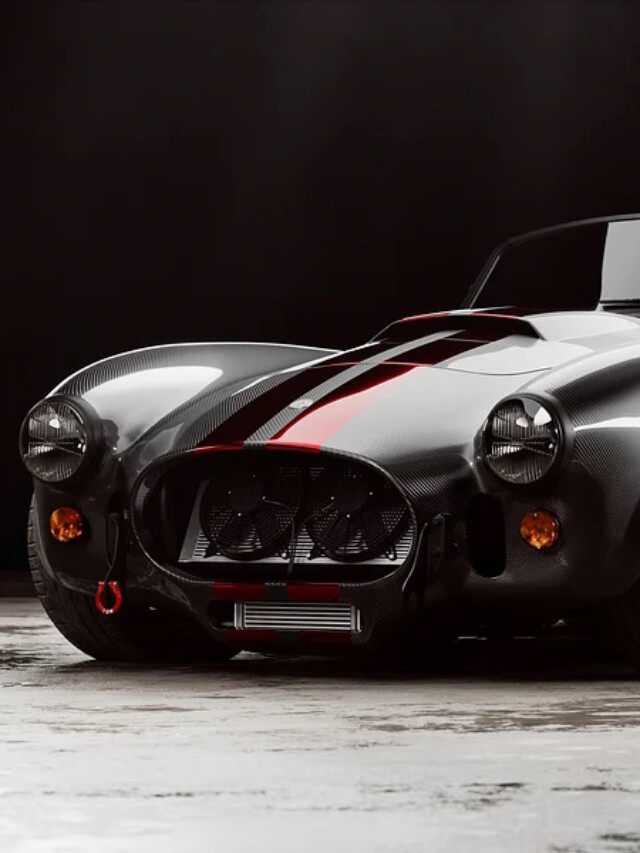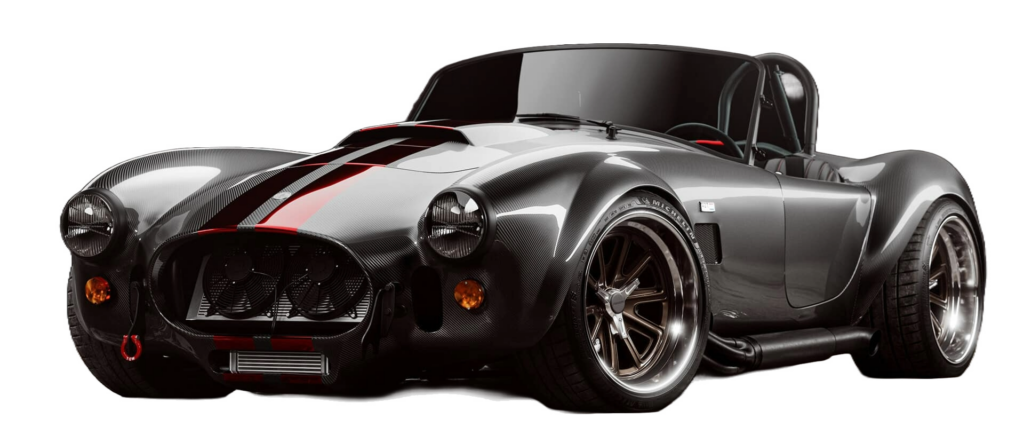The Roar of a Legend—The Most Notable Shelby Cobra Races
Contents
- 1 The Roar of a Legend—The Most Notable Shelby Cobra Races
- 1.1 The Birth of a Legend: Brief Background on the Shelby Cobra
- 1.2 Significance in American Automotive History
- 1.3 Overview of Its Impact on Racing
- 1.4 1963 – 12 Hours of Sebring: The Audacious Debut
- 1.5 1964 – 24 Hours of Le Mans: The American Assault on French Soil
- 1.6 1967 – 24 Hours of Daytona: The American Dream Materializes on Home Soil
- 1.7 Domestic Success: The Shelby Cobra Reigns Supreme on Home Turf
- 1.8 Vintage and Historic Racing
- 1.9 Legacy and Impact
- 1.10 The Everlasting Legacy
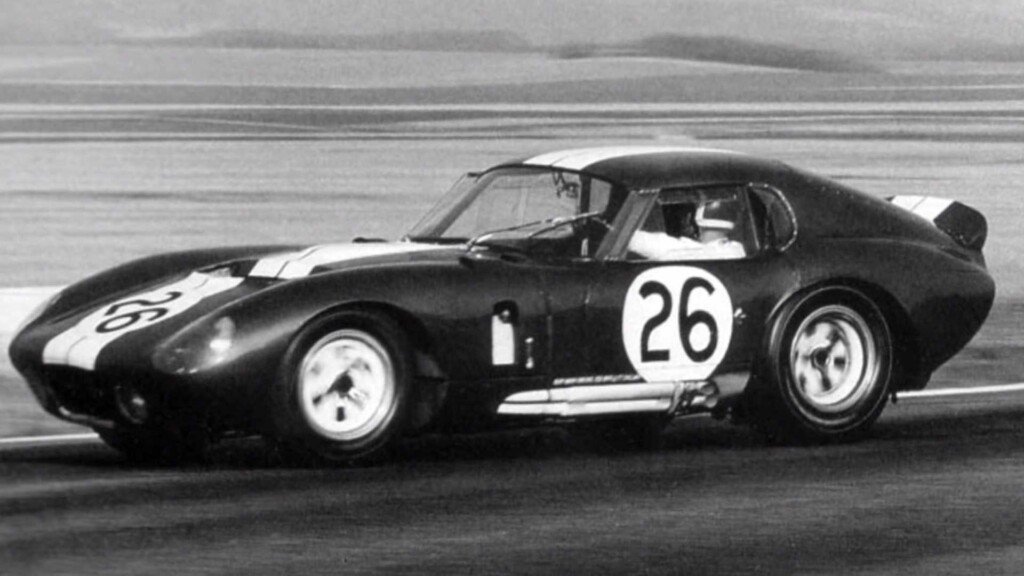
The Birth of a Legend: Brief Background on the Shelby Cobra
In the early 1960s, automotive visionary Carroll Shelby envisioned a car that would combine American muscle with European agility. The result was the legendary Shelby Cobra —a fierce hybrid, born from coupling a potent American V8 engine with a lightweight British AC Ace chassis.
Read More>> Limited Edition Shelby Cobra For Sale
Significance in American Automotive History
The Shelby Cobra stands as a monumental achievement in American automotive history. It broke the European stronghold on sports car racing and established the U.S. as a serious contender on the international stage. Winning the FIA World Sportscar Championship in 1965, the Cobra became the first American car to claim this prestigious title, sending shockwaves throughout the automotive world.
Overview of Its Impact on Racing
But the Shelby Cobra’s legacy isn’t confined to its aluminum and steel composition. Its racing accomplishments are stuff of legend—from the rigorous 12 Hours of Sebring to the grueling 24 Hours of Le Mans. Through these competitions, the Cobra didn’t just achieve victories; it became an enduring symbol of American grit, audacity, and innovation.
1963 – 12 Hours of Sebring: The Audacious Debut
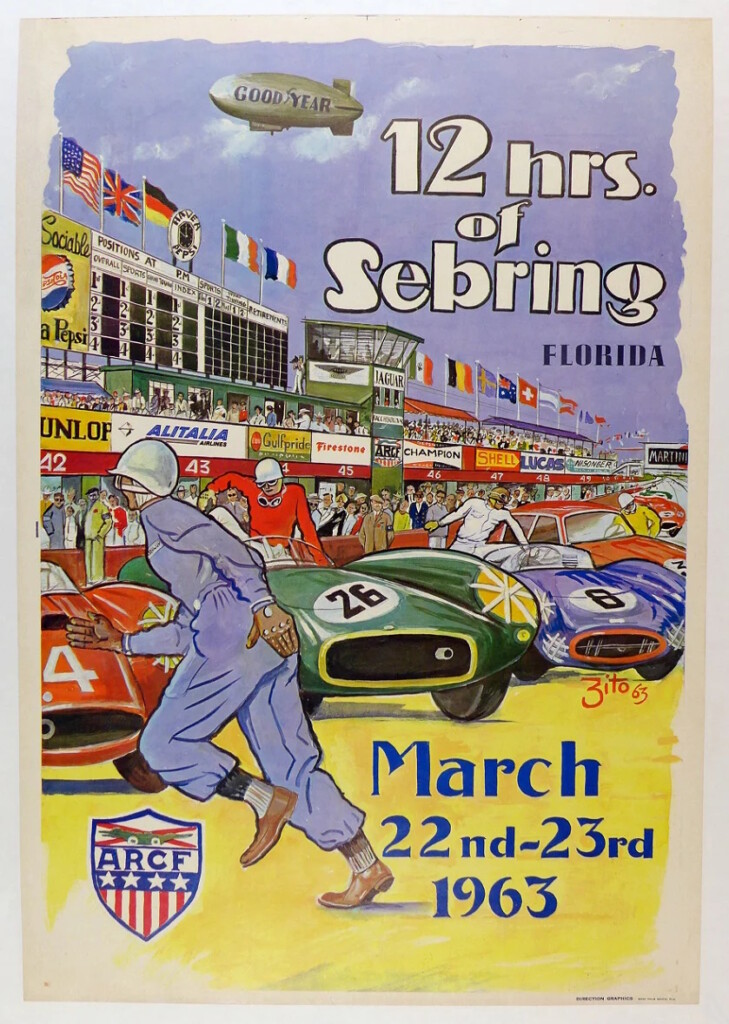
Importance of the Race
The 12 Hours of Sebring, a cornerstone in the American endurance racing calendar, is often cited as a rite of passage for new marques seeking international prestige. The Florida race is notorious for its grueling track, a blend of asphalt and concrete that wears both man and machine down to their breaking points. When the Shelby Cobra made its appearance at the Sebring track in 1963, the automotive world was watching with a blend of curiosity and skepticism. Could this American upstart hold its own against the likes of Porsche and Ferrari?
Performance and Impact
The Cobras faced a myriad of issues from the outset, including mechanical problems that kept them from clinching the top spot. Yet, despite these setbacks, their performance was revelatory. With blistering speed on the straights and remarkable agility, the Cobras held their ground and gave the European stalwarts a run for their money. Although they didn’t win, the cars demonstrated their considerable potential, setting the stage for their future domination.
Key Drivers and Outcomes
The 1963 Sebring race featured a talented roster of drivers behind the wheels of the Shelby Cobras, including the likes of Dan Gurney and Phil Hill, both of whom had already etched their names in motorsports history. While mechanical issues prevented the team from seizing victory, the experience and data gathered from this race were invaluable. It provided Shelby and his team the necessary insights to refine the Cobra, turning it into a more formidable contender in subsequent races.
The 1963 12 Hours of Sebring may not have been a crowning achievement for the Shelby Cobra, but it was a critical moment of validation. It showed that this audacious American experiment in high-speed engineering was more than just a novelty—it was a serious contender on the global motorsports stage. And it was only a hint of greater glories to come.
1964 – 24 Hours of Le Mans: The American Assault on French Soil
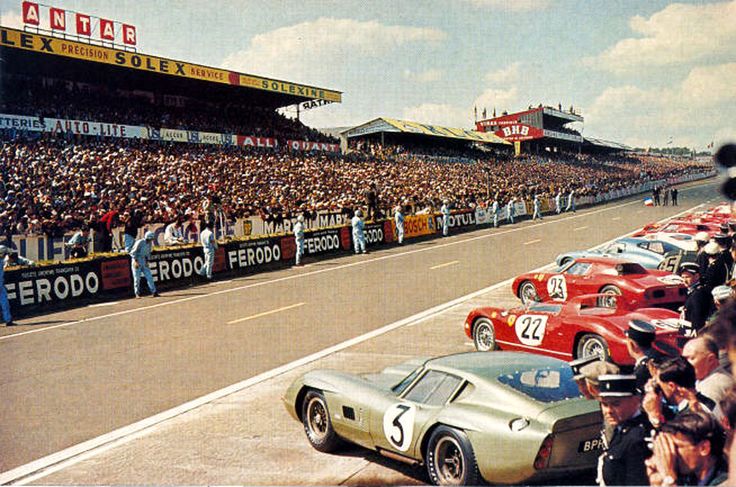
Prestige of the Le Mans Race
The 24 Hours of Le Mans is the Mount Everest of motorsport—a race that challenges the limits of engineering, driver skill, and sheer human endurance. Held annually since 1923 near the town of Le Mans, France, this race is not just a spectacle; it’s an institution that has shaped the very ethos of automotive racing. To compete at Le Mans is to vie for a place in the hallowed annals of motor racing history. It’s the stage where legends are born and myths are made.
Shelby Cobra’s Debut and Performance
When the Shelby Cobras rolled onto the Circuit de la Sarthe in 1964, they were taking on a Herculean task. European cars, with years of Le Mans experience under their belts, were the unquestioned favorites. The Cobras, however, had a potent mix of raw power and rugged durability. Throughout the 24-hour ordeal, the Cobras demonstrated remarkable resilience and, at times, astonishing speed.
Yet, challenges were aplenty. Mechanical gremlins reared their heads, and the team had to wrestle with issues ranging from brakes to gearbox malfunctions. But even amid these tribulations, the Cobras sent a clear message: they had arrived on the world stage, and they were there to stay.
Rivalries and Final Standings
The Cobras faced stiff competition from European juggernauts like Ferrari and Porsche. But unlike their competitors, who had mastered the art of endurance racing, the Cobras were still the new kids on the block. Despite the intense rivalry and the obvious performance gaps in certain aspects, the Cobras managed to make an indelible impression. Although they didn’t take home the trophy, their performance was seen as a shot across the bow to the European racing establishment.
The final standings told a tale of promise and potential, rather than outright triumph. For Shelby and his team, Le Mans was less an end than a beginning—a valuable learning experience that would inform their efforts in the years to come.
The 1964 24 Hours of Le Mans served as a baptism by fire for the Shelby Cobras, marking their entry into an elite class of racing competition. While they didn’t win, their presence and performance were groundbreaking, setting the stage for the epoch-making victories that were soon to follow. The race was a testament to American grit and ingenuity, qualities that would soon catapult the Shelby Cobra into motorsports legend.
1967 – 24 Hours of Daytona: The American Dream Materializes on Home Soil

Context of the Race
By 1967, the 24 Hours of Daytona had earned its reputation as one of the crown jewels of endurance racing. Nicknamed the “American Le Mans,” Daytona’s 24-hour spectacle was the ultimate test of speed and stamina, held on the famous tri-oval track that included a challenging infield road course. The race had quickly grown into an international event, attracting top teams and drivers from around the world. For the Shelby Cobra team, Daytona presented an opportunity to make a statement on home soil, a chance to demonstrate that they had learned from their past experiences and were ready for victory.
Shelby Cobra’s Performance
Shelby’s Cobras had come a long way since their 1963 debut. Under the relentless pursuit of perfection by Carroll Shelby and his team, the cars had been meticulously fine-tuned, their flaws ironed out, and their capabilities heightened. At Daytona, they faced stiff competition, primarily from European racing powerhouses like Ferrari and Porsche. However, unlike earlier outings, the Cobras showcased a near-flawless blend of speed, reliability, and tactical racing.
The Cobras ran a remarkably clean race. Their drivers deftly maneuvered through the field, while the pit crew executed seamless stops. The cars held up against the physical toll of the circuit, navigating the tortuous combination of high-speed straights and tight, technical sections with grace and power. The roar of the V8 engines became a clarion call, heralding the ascendency of American automotive prowess.
Importance in the Endurance Racing Scene
The 1967 24 Hours of Daytona marked a significant milestone in the Shelby Cobra’s storied racing history. Though the Cobras did not take the overall win, their performance was a vindication of the years of hard work, innovation, and sheer willpower that had gone into the project. The race served as a defining moment, not just for the Shelby Cobra, but for American motorsports as a whole. It was a signal to the world that the United States could produce cars that were not just fast but resilient, cars that could withstand the most brutal conditions and still go toe-to-toe with the best in the world.
The 1967 24 Hours of Daytona was an epic tapestry woven from threads of grit, determination, and unyielding pursuit of excellence. The Shelby Cobra’s compelling performance at the event signified its transition from a promising contender to a venerable fixture in the endurance racing circuit. In so doing, it didn’t just add to its long list of accolades; it further entrenched itself in the collective imagination as a symbol of American audacity and innovation.
Domestic Success: The Shelby Cobra Reigns Supreme on Home Turf
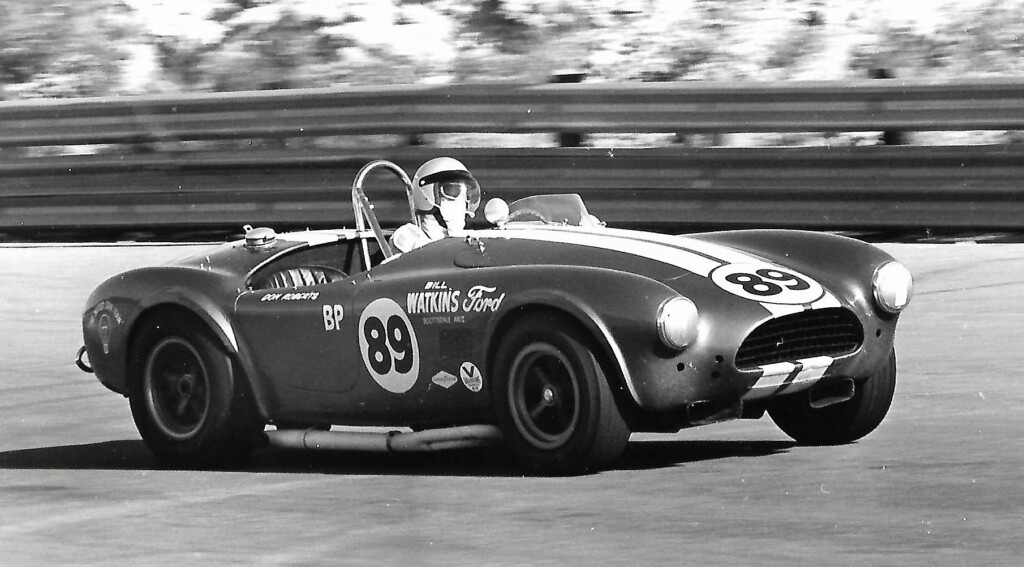
Brief Overview of the SCCA
The Sports Car Club of America (SCCA) has long been a bastion for grassroots motorsport in the United States. Established in 1944, the SCCA organizes a wide array of racing events, from amateur autocross to high-level road racing championships. The SCCA National Championships serve as the pinnacle of this ecosystem, a stage where the best in American racing talent convenes to duke it out for domestic supremacy. Within this context, the Championships serve as an essential proving ground for American-made cars, and this is where the Shelby Cobra came to make yet another indelible mark.
How Shelby Cobras Performed in the Series
In the annals of SCCA history, few cars have made as resounding an impact as the Shelby Cobra. Its entrance into the series was akin to a hurricane hitting a placid coastline; it disrupted established norms and immediately set new standards. Cobras didn’t just participate in the SCCA—they dominated. Their combination of raw power, nimble handling, and superior engineering made them almost unbeatable in various classes.
Under the stewardship of experienced drivers and talented mechanics, the Cobras racked up victories and titles, sweeping aside more established names with seeming ease. The car became a staple at SCCA events, its unique roar echoing as both a siren song for enthusiasts and a harbinger of defeat for competitors.
Lasting Impact in Domestic Racing
The Shelby Cobra’s dominance in the SCCA wasn’t just a series of isolated victories; it was a seismic shift in American road racing. The car’s performance emboldened other American manufacturers to aim higher, to think beyond domestic markets, and to set their sights on international racing glory. In essence, the Cobra became the gold standard, the benchmark against which new entrants measured their mettle.
Moreover, the Cobra’s success created a ripple effect that transcended the racetrack. It influenced automotive design, spurring innovation in aerodynamics, engine efficiency, and materials science. Its success also led to a surge in interest in motorsports among the American public, transforming what had been a niche hobby into a mainstream cultural phenomenon.
The Shelby Cobra’s success in the SCCA National Championships is a pivotal chapter in its illustrious story, a testament to its versatility and excellence. As much as it showcased American ingenuity on international stages, it also became a beacon of domestic prowess, forever altering the landscape of American motorsports. Its influence didn’t just end when the checkered flag dropped; it has reverberated through time, leaving a legacy that continues to inspire, challenge, and enthrall.
Vintage and Historic Racing
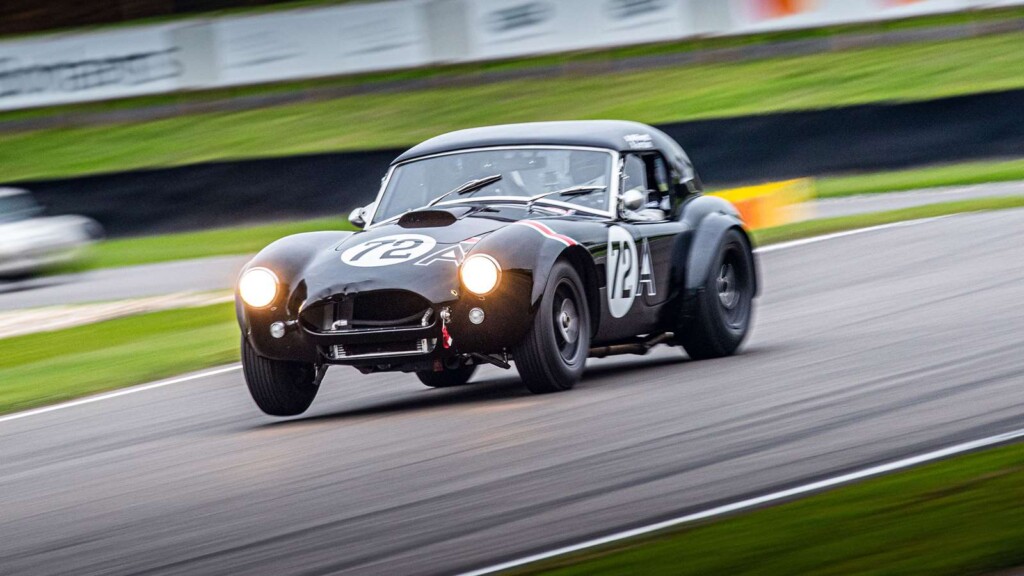
Goodwood Revival
The Goodwood Revival is more than just a vintage car race; it’s a theatrical spectacle, a trip down memory lane, and a reverent nod to the golden age of motorsports. Hosted at the historic Goodwood Circuit in the United Kingdom, the Revival is a carefully curated event that brings together a unique mix of classic cars, vintage fashion, and old-world charm. It’s not just about who crosses the finish line first; it’s about reliving an era when style, grace, and mechanical beauty held as much sway as speed and performance. In this living museum of motorsport, the Shelby Cobra has found a fitting home for its enduring allure.
Shelby Cobra’s Presence and Performance
Within the nostalgic environs of the Goodwood Revival, the Shelby Cobra emerges as more than a vintage racer—it’s a celebrity, greeted with fanfare and admiration. The car doesn’t just participate; it performs, reminding spectators why it became a legend in the first place. With its signature roar and striking aesthetics, the Cobra adds a dash of American flair to the largely European-centric gathering.
However, it’s not merely an object of curiosity. These Cobras, often piloted by seasoned drivers, show off their racing prowess in competitions that are as fierce as they are gentlemanly. In the race classes where Cobras are eligible, they frequently set the pace, confirming that their racing pedigree has not dimmed with age.
Significance in Preserving Motorsports History
The Goodwood Revival does more than pay homage to classic cars; it plays a vital role in preserving and celebrating the rich tapestry of motorsports history. The Shelby Cobra’s regular presence at this event symbolizes its timeless appeal and the lasting contribution it has made to automotive culture. Its participation ensures that new generations can experience the awe that this machine inspired in its heyday, reaffirming its status as a living legend.
Moreover, the Cobra’s outings at Goodwood serve as a testament to American innovation and grit, offering a counterpoint to the European giants that often dominate the narrative of historic racing. In this way, the Shelby Cobra not only retains its relevance but also perpetuates its mythos, further cementing its place in the eternal pantheon of motorsports.
The Shelby Cobra’s participation in vintage and historic racing, epitomized by events like the Goodwood Revival, is not just a nostalgic act; it’s a continual reiteration of its prowess and significance. Through these events, the Cobra is not confined to history books or static museum displays; it roars to life, animating the past and continuing to write new chapters in an enduring story of speed, innovation, and indomitable spirit.
Legacy and Impact
Shelby Cobra’s Continued Influence in the Racing World
Long after its initial heyday, the Shelby Cobra continues to resonate in the world of motorsports. The car’s design principles, focused on achieving a perfect balance between raw power and agile handling, have become a blueprint for sports car engineering. Subsequent generations of racers and automakers alike find themselves revisiting the Cobra’s playbook, keen on capturing even a fraction of its groundbreaking magic. Numerous racing events, including vintage and historic races, regularly feature Cobras—both original and replica—as testament to its everlasting appeal and effectiveness.
Role in Popular Culture, Including Movies and Video Games
Beyond the confines of the racetrack, the Shelby Cobra has become an iconic symbol in popular culture. Its unique look and unmistakable roar have graced movies, ranging from action-packed blockbusters to heartfelt dramas. The Cobra has been immortalized in a myriad of video games where players can virtually sit behind its wheel and feel the exhilaration that real-life drivers experienced. Its cultural imprint is so vast that even those who aren’t automotive enthusiasts recognize its distinctive form and appreciate its inherent coolness.
Market for Vintage and Replica Shelby Cobras
The allure of owning a piece of automotive history has turned vintage Shelby Cobras into prized collectibles. Auction prices for original models routinely reach into the stratosphere, a testament to their enduring value. But the Cobra’s legacy is not just confined to multi million-dollar originals. A thriving market for replicas exists, offering automotive aficionados a more accessible route to experience the Cobra magic. These Shelby Cobra replicas, often built with meticulous attention to detail, allow the spirit of the Shelby Cobra to live on in garages and on roads around the world.
The Everlasting Legacy
Summary of the Shelby Cobra’s Enduring Legacy in Motorsports
The Shelby Cobra didn’t just make a splash in motorsports; it created a tidal wave whose ripples continue to be felt today. Whether on the international stage at Le Mans and Daytona or dominating the home front in SCCA championships, the Cobra has carved its name deep into the annals of racing history. Its feats are recounted in stories that transcend generations, inspiring a new crop of drivers, engineers, and dreamers to reach for the impossible.
Influence on American Automotive Design and Engineering
In terms of American automotive ingenuity, the Shelby Cobra stands as a towering monument. It shattered preconceived notions about what American cars could do, challenging European dominance in the realm of high-performance sports cars. The Cobra pushed the boundaries of engineering, inspiring a host of innovations in aerodynamics, materials science, and engine technology. Even now, American sports cars are measured against the yardstick that is the Shelby Cobra—a testament to its lasting impact.
The Shelby Cobra’s journey, from its audacious debut to its eternal resonance in motorsports and popular culture, is a tale of vision, perseverance, and unyielding excellence. It’s a story that doesn’t end because people keep telling it, keep living it, and keep finding new ways to celebrate its extraordinary legacy. In that sense, the Shelby Cobra is not just a car; it’s a legend that forever roars in the hearts of those who love the beautiful, thrilling, and indomitable spirit of racing.

